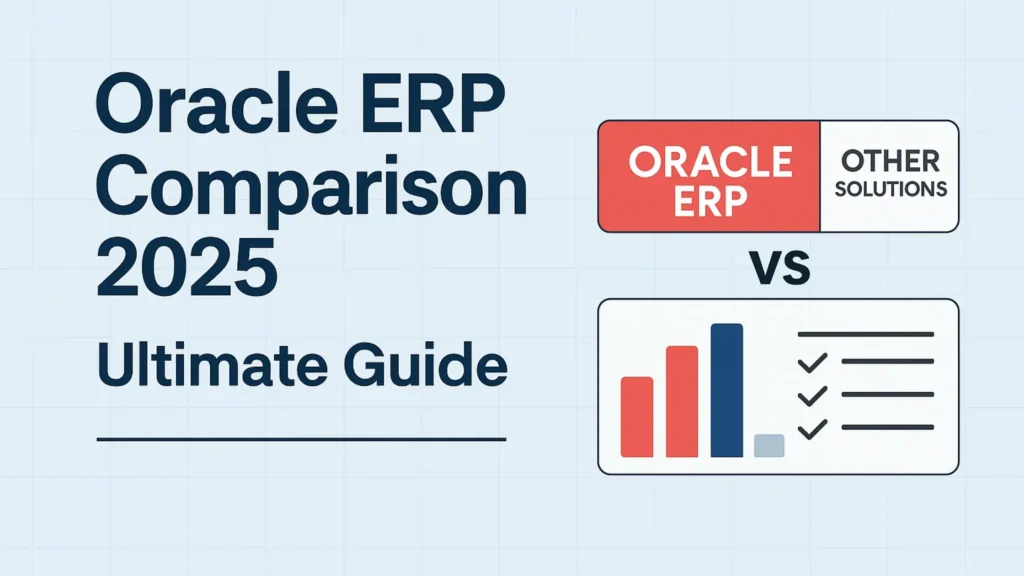In recent years, healthcare providers have increasingly adopted cloud computing for storing and managing patient information. However, as with any technology implementation, there are inherent risks and challenges regarding ensuring the security and privacy of sensitive data in the cloud. Patients trust healthcare providers to safeguard their information, and patient data breaches can lead to significant financial, legal, and reputational damages. Therefore, healthcare providers must adopt expert strategies for protecting patient information in the cloud. This includes implementing robust security measures, complying with regulatory requirements, and training employees to be aware of best practices for data security.
Understanding Cloud Security in Healthcare
Adequate cloud security is critical for healthcare providers who store and manage patient information in the cloud. Cloud computing offers several advantages for healthcare data management, including cost savings, improved accessibility, and real-time information sharing. However, there are challenges and risks, such as operational and infrastructure costs, privacy concerns, and regulatory compliance.
Security concerns in healthcare vary depending on the type and amount of data being stored, but common threats include identity theft, data breaches, and cyberattacks. Healthcare providers must understand these risks and adopt expert strategies to mitigate them. Best practices for cloud security in healthcare include implementing data encryption and access controls, infrastructure security measures, and auditing and monitoring.
Compliance with regulatory requirements like HIPAA is also critical for healthcare providers. HIPAA regulations ensure that patient data is managed and stored securely and access is limited to authorized personnel. Failing to comply with HIPAA can result in significant financial and legal damages and damage to a healthcare provider’s reputation and patient trust.
Employee training and education are also essential to maintaining adequate cloud security in healthcare. Healthcare providers must ensure that their employees are aware of best practices, including using strong passwords, avoiding phishing scams, and reporting any security incidents immediately.
Adequate cloud security in healthcare is about building patient trust through secure practices and technologies. Adopting cutting-edge solutions and implementing expert strategies can help healthcare providers safeguard patient information and ensure regulatory compliance. Healthcare providers must prioritize cloud security to protect patients’ sensitive data and maintain their trust.
Data Security Best Practices for Healthcare Providers: Safeguarding Patient Information in the Cloud
As healthcare providers increasingly adopt cloud-based solutions for storing patient information, ensuring data security becomes paramount. Protecting sensitive healthcare data in the cloud requires implementing robust strategies, including access controls, authentication, authorization mechanisms, and data encryption methods. This article will examine expert strategies for securing patient information in the cloud and explore the best practices healthcare providers can follow to enhance data security.
Cloud Security in Healthcare
Access controls are crucial in restricting unauthorized access to patient data in the cloud. Healthcare providers should limit access to authorized users to prevent data breaches. Establishing strict access controls is essential to ensure security. This can be achieved by defining user roles and privileges and implementing authentication mechanisms such as multi-factor authentication (MFA). MFA adds an extra layer of security by requiring users to verify their identities using multiple factors such as a password, a fingerprint, or a token. By adopting MFA, you can significantly reduce the risk of unauthorized access to sensitive data.
Another critical aspect of access controls is role-based access control (RBAC), which ensures that users only have access to the data and functionalities necessary to perform their roles. By assigning appropriate permissions based on job responsibilities, healthcare providers can prevent unauthorized access and reduce the potential for accidental or malicious misuse of patient data.
Authentication and Authorization Mechanisms
Authentication and authorization mechanisms are vital components of healthcare data security. Authentication verifies user identity to access patient information; authorization grants access level. Implementing robust authentication mechanisms, such as strong password policies and regular password updates, is essential to prevent unauthorized access. Additionally, healthcare providers should consider adopting single sign-on (SSO) solutions, which streamline user access while maintaining security by requiring users to authenticate only once.
Healthcare providers should leverage identity and access management (IAM) solutions to ensure proper authorization. IAM facilitates centralized management of user identities, enabling healthcare providers to control access based on roles, responsibilities, and the principle of least privilege. With IAM, healthcare providers can grant, revoke, or modify user access privileges efficiently, reducing the risk of unauthorized data access or modifications.
Data Encryption Methods
Data encryption is fundamental for protecting sensitive patient information in the cloud. Converting data into an unreadable format that requires a decryption key is encryption. Encrypting data at rest and in transit provides an added layer of security, ensuring that patient information remains protected even if unauthorized access occurs.
Symmetric and asymmetric encryption are standard encryption methods used in healthcare data security. Symmetric encryption uses a single key to encrypt data, while asymmetric encryption uses a pair of keys: a public key for encryption and a private key for decryption. Hashing algorithms, such as MD5 or SHA-256, are also employed to ensure data integrity by generating unique hash values for data.
Implementing strong encryption standards, such as the Advanced Encryption Standard (AES), is crucial for healthcare providers. AES is widely regarded as one of the most secure encryption algorithms available. Healthcare providers must encrypt patient data before storing it in the cloud and when transmitting it between systems, ensuring end-to-end security.
Best Practices for Data Encryption
To enhance data encryption practices and protect patient information in the cloud, healthcare providers should follow these best practices:
- Implement encryption measures throughout the data lifecycle, including data at rest and in transit.
- Maintain critical solid management practices and protect encryption keys from unauthorized access.
- Regularly update encryption algorithms and protocols to stay ahead of evolving security threats.
- When transmitting data, use secure communication channels such as encrypted VPNs or SSL/TLS.
- Conduct regular security audits to identify and address any vulnerabilities in the encryption implementation.
Compliance Considerations
Compliance with regulations such as the Health Insurance Portability and Accountability Act (HIPAA) and the General Data Protection Regulation (GDPR) is essential for healthcare providers. Data security best practices, including access controls, authentication, authorization mechanisms, and data encryption, align with these regulations and help healthcare providers maintain compliance. By implementing these best practices, healthcare providers demonstrate their commitment to protecting patient information and reducing the risk of regulatory violations.
Risk Management and Compliance in Cloud Environments
Importance of Risk Management in Cloud-Based Healthcare Systems
Managing risk becomes crucial in the increasingly digital world of healthcare, where cloud-based systems offer numerous advantages. Risk management is identifying potential threats and vulnerabilities within cloud environments and proactively mitigating them. Risk management focuses on protecting patient data and ensuring healthcare systems’ integrity, availability, and confidentiality. By effectively managing risks, healthcare providers can safeguard patient information, maintain compliance with regulations, and protect their reputations.
One of the critical components of risk management in cloud-based healthcare systems is conducting risk assessments. Risk assessments involve identifying and evaluating potential risks to patient data, including threats such as unauthorized access, data breaches, system failures, and natural disasters. Regular risk assessments allow healthcare providers to gain visibility into potential vulnerabilities and prioritize risk mitigation efforts.
Conducting Risk Assessments in Cloud Environments
To effectively conduct risk assessments in cloud environments, healthcare providers should follow best practices, including:
Comprehensive Asset Inventory: Create an extensive inventory of all assets, including hardware, software, applications, and data stores. This inventory should identify their location, classification, and associated risks.
Data Breach Scenarios: Identify potential data breach scenarios and assess their likelihood and potential impact. Consider unauthorized access, data loss, corruption, and reputational damage.
Vulnerability Assessment: Perform a vulnerability assessment to identify weaknesses and potential entry points for attackers. This may involve penetration testing to evaluate the security of external attack surfaces.
Analysis of Security Controls: Analyze existing technical and administrative security controls to determine their effectiveness in mitigating risks. Identify any gaps or deficiencies that attackers may exploit.
Implementing Risk Mitigation Measures
Implementing risk mitigation measures is crucial to reduce the likelihood and impact of identified risks. Some best practices for risk mitigation in cloud-based healthcare systems include:
Least-Privilege Access Controls: Implement strict access controls to ensure that users only have access to the information required to perform their job responsibilities. Regularly review and update access privileges based on changing roles and responsibilities.
Regular Audits and Updates: Conduct frequent audits of technical, physical, and administrative safeguards to ensure they are up-to-date and effective. Regularly update software, firmware, and security patches to protect against known vulnerabilities.
Data Backups and Disaster Recovery: Regularly back up all critical data and test data restoration processes to ensure they can be quickly and accurately recovered during a data loss incident. Consider implementing failover arrangements to ensure the availability of critical systems.
Business Continuity Planning: Develop and maintain a business continuity plan that outlines procedures for responding to and recovering from disruptions. This plan should include disaster recovery measures, alternative communication methods, and temporary work arrangements.
Regulatory Compliance Considerations: HIPAA and GDPR
Compliance with relevant regulations is essential for healthcare providers to protect patient data in cloud environments. Healthcare providers must consider two key regulations: the Health Insurance Portability and Accountability Act (HIPAA) and the General Data Protection Regulation (GDPR).
HIPAA sets the standard for protecting sensitive patient data in the United States. Healthcare providers must implement technical, physical, and administrative safeguards to maintain patient information’s privacy, integrity, and availability.
GDPR applies to healthcare providers who process the personal data of European Union (EU) citizens. It requires organizations to implement appropriate technical and organizational measures to protect personal data and gain explicit consent from individuals for data processing.
To maintain compliance with HIPAA and GDPR
Implement Administrative Safeguards: Train staff on regulatory compliance procedures, including minimizing the collection and retention of patient data. Develop policies and procedures for incident response, breach notification, and workforce sanctions.
Implement Technical Safeguards: To protect patient data, employ encryption, strong authentication, and access controls. Regularly assess and update security controls to align with evolving threats and best practices.
Implement Physical Safeguards: Ensure physical security measures are in place to protect facilities and equipment that store, process, or transmit patient data. Limit physical access to authorized personnel only.
Periodically Test and Update: Conduct regular compliance audits and vulnerability assessments to identify deficiencies and implement corrective action plans. Regularly review and update policies and procedures to align with regulatory requirements.
conclusion
In conclusion, risk management and regulatory compliance are essential for protecting patient information in cloud-based healthcare systems. By conducting thorough risk assessments, implementing risk mitigation measures, and adhering to regulations like HIPAA and GDPR, healthcare providers can ensure the security and confidentiality of patient data. Take proactive steps to safeguard patient information in the cloud today.
Looking to shape your business by Protecting Patient Information in the Cloud? Everite Solutions specializes in helping companies to strategize and achieve their goals. Our expert team of consultants can guide you in leveraging the power of custom software to shape your business effectively.
Visit our website, www.everitesolutions.com, to learn more about our custom software consulting services. Contact us at email id info@everitesolutions.com and our mobile number +1 404-835-1605 to schedule a consultation and discover how Everite can help shape your business’s future.







